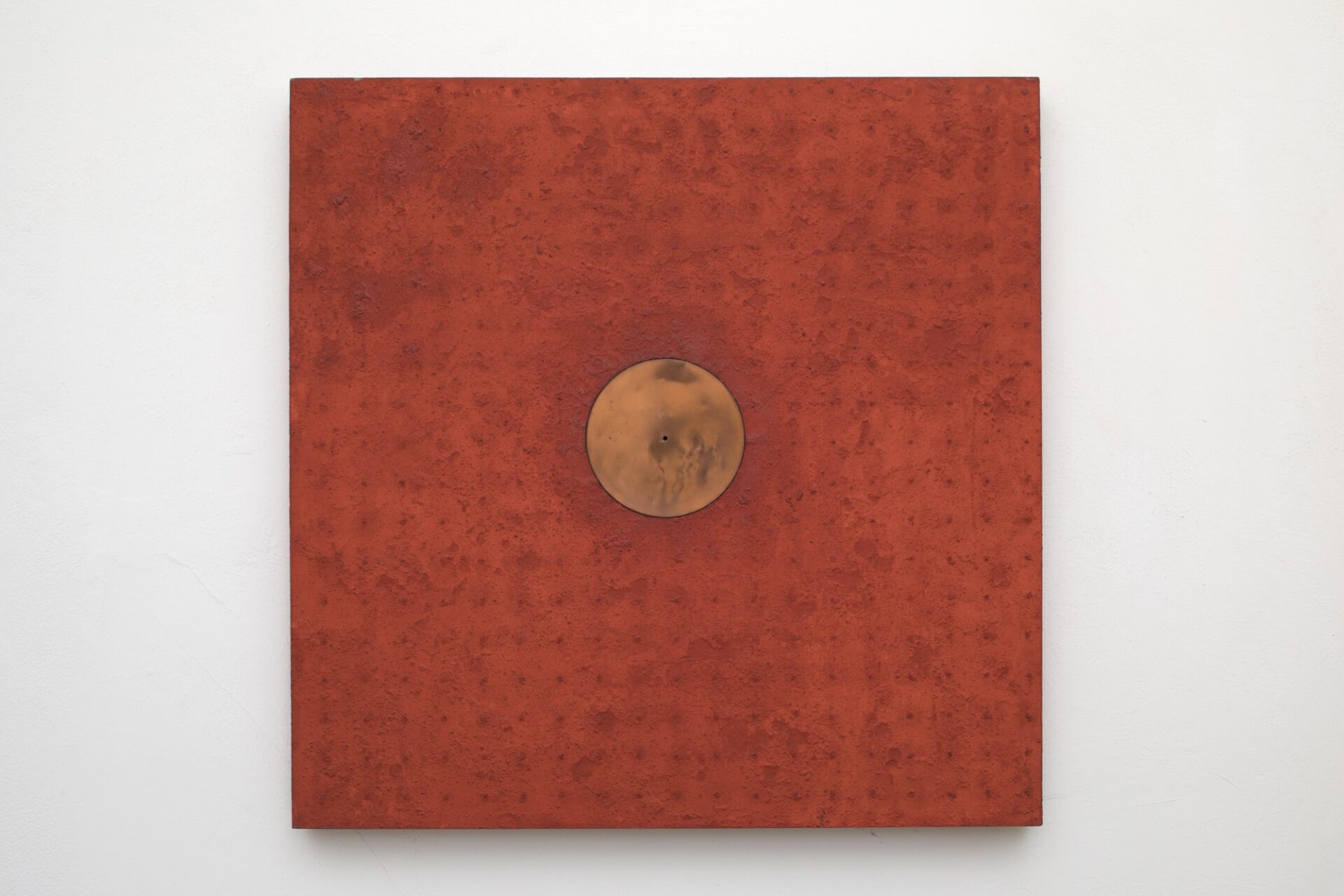In 1975, Roberta Smith wrote of this piece, “An extraneous object is set into a densely coloured, textured ground, contributing its own intrinsic colour and surface. . . . The extraneous materials, such as the copper disc, were usually what was available, often from the street; the part suggested a certain unusual use and placement.”1
In works from the late 1980s and early1990s, several which he installed at his Ranch Office, Judd returned to this practice of including found objects in square reliefs. See for example untitled, 1992 in which Judd placed a rusted cast iron found object into the square plywood surface.
